Iwashi Sushi
Pilchard
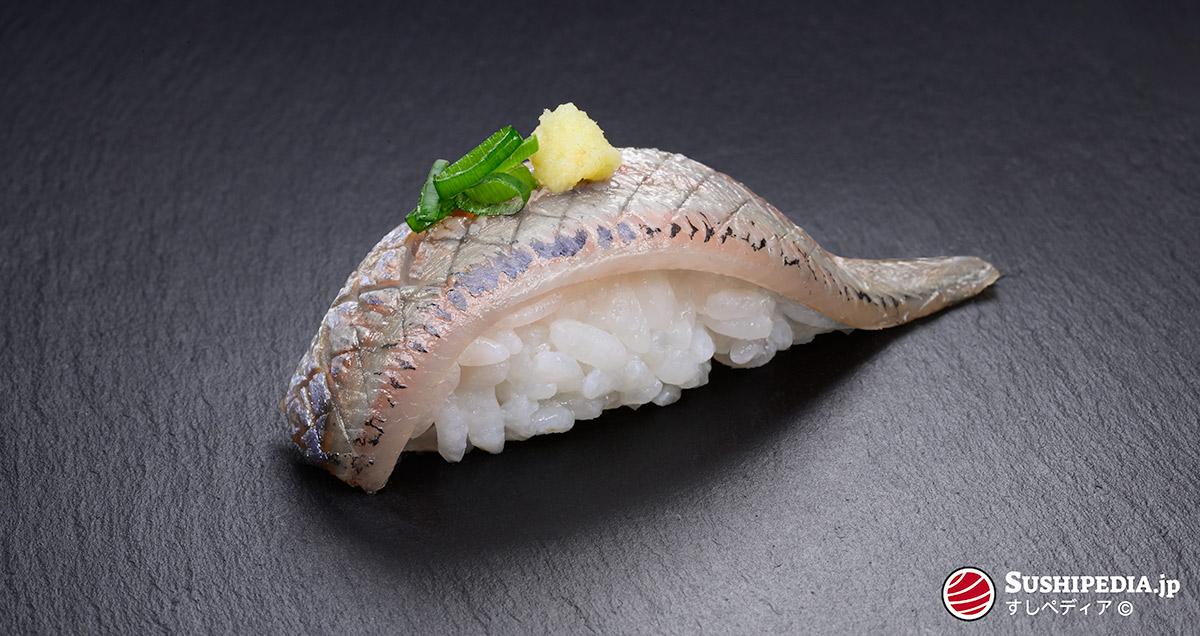
What is Iwashi (Pilchard)?
In Japan the collective term iwashi (鰯・鰛・鰮) refers to a group of fishes beloging to the families of Clupeidae, Dussumieriidae and Engraulidae. Within this generic term, a distinction is made between three types. Those types are the pacific pilchards or sardines, round herrings and anchovies. These three groups are caught in large quantities and are important not only for fresh fish but also for the processing industry.
Iwashi as Ingredient for Sushi or Sashimi
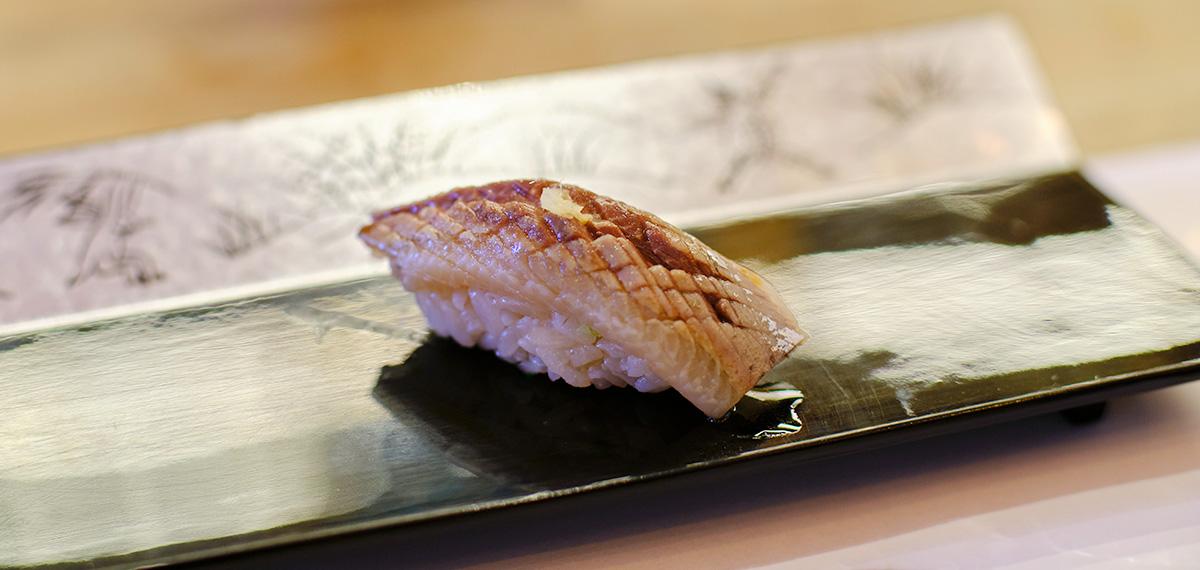
The fish of the iwashi group are considered fragile, which must be processed carefully and quickly. Since its meat decomposes rapidly, it develops an unpleasant odor early after being caught and is therefore only available in limited quantities in sushi or sashimi quality. To maintain freshness iwashi is either soaked in 3 to 5 percent salt water or previously sprinkled with salt and then placed in a mixture of ice water and vinegar. The osmotic effect of the salt solution has a slightly preservative effect, reduces the odor and maintains the shiny skin surface characteristic of iwashi.
“With plump in-season iwashi, the fatty layer in between the skin and the flesh is amazingly thick. Despite that, it neither smells fishy nor tastes greasy.
- Jiro Ono, Sushi Chef [Satomi, 2016]
Ginger and green onions are suitable as a garnish. Besides the taste component, ginger also has a neutralizing effect on the smell. Especially fresh specimens harmonize very well with wasabi alone. In upscale sushi restaurants, ginger and spring onions are sometimes pressed into a paste, refined individually and placed on top of the nigiri that is coated with soy sauce. If iwashi is prepared as sashimi, soy sauce mixed with ginger is very suitable.
Best Season
The spawning times of maiwashi depend on the region and population, therefore no exact season can be determined for sardines from the group of ma iwashi. In Japan the months from June to October are traditionally considered to be the tastiest time of year for Japanese sardines. The spawning season of the european sardine (yōroppa ma-iwashi) also varies considerably by region and population, with the main fishing season beginning in late spring and ending in late summer. Iwashi caught between spring and summer are also considered particularly tasty and are called baiu iwashi (rainy season) or nyuubai iwashi (beginning of the rainy season). Urume iwashi is caught all year round, but it is said that the best season is from winter to early spring, when the fish have become fattier. Katakuchi iwashi migrates from the East China Sea to the coastal region of Taiwan to spawn in late winter and early spring. Therefore summer is considered the best season for katakuchi iwashi.
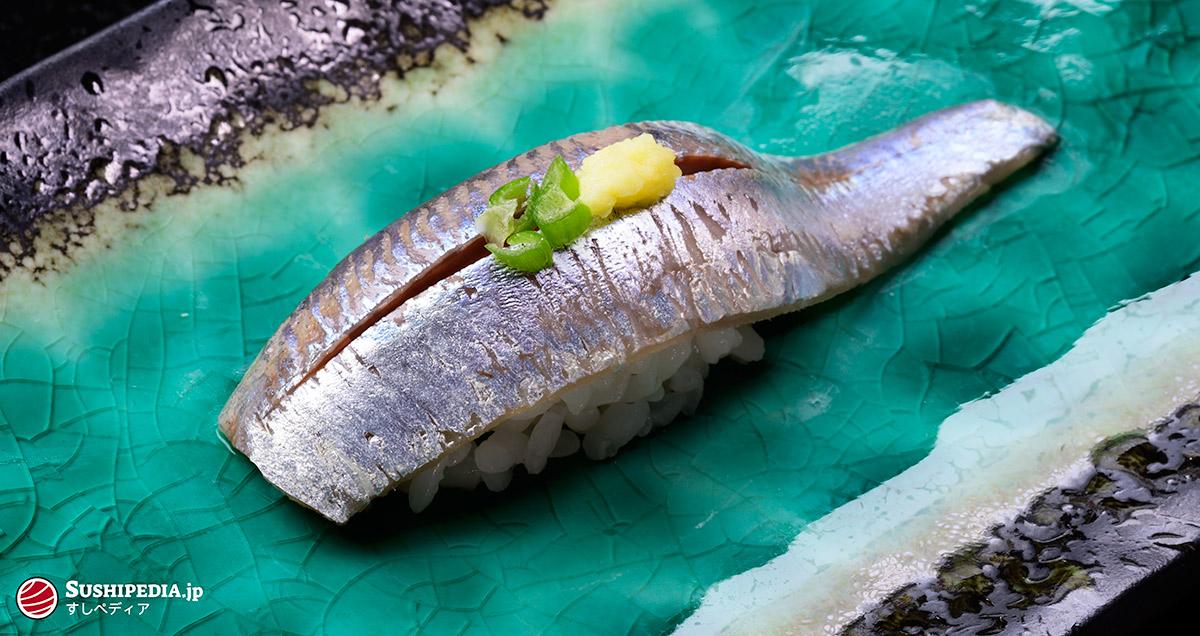
Iwashi in Japan
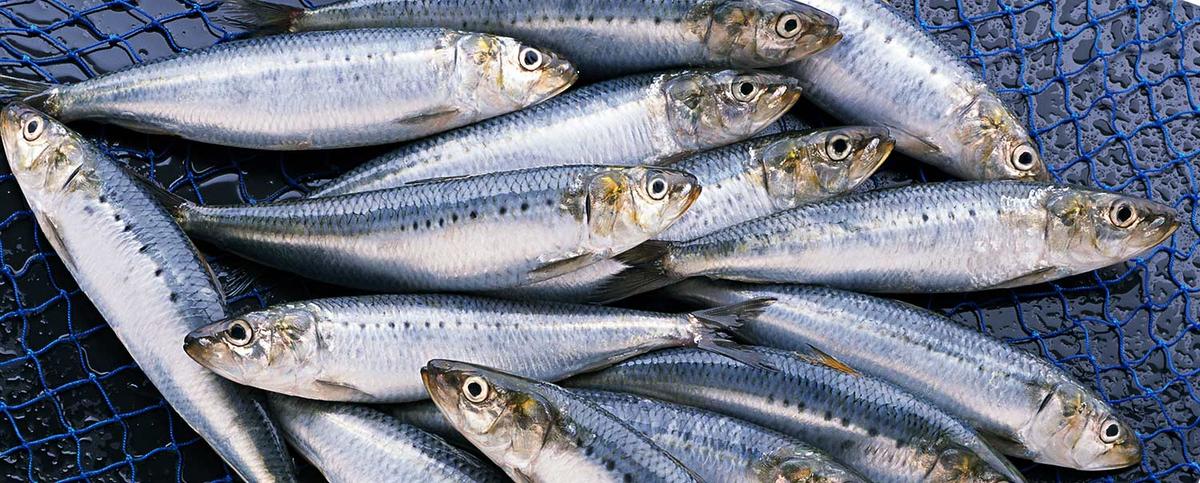
In Japan, October 4 has been the official sardine day since 1985 (イワシの日). The day was created by the Iwashi Promotion Association (いわし普及協会) with the aim of encouraging the acceptance of sardines as a cheap and tasty fish. In Japanese, October 4th is written as 10月4日, resulting in a pun that reads iwashi (1 → い [i], 0 → わ [wa], 4 → し [shi]) [Kase, 2009].
Characteristics & Ecology of Iwashi (Pilchard)
Maiwashi マイワシ【真鰯】
The most common iwashi species found on Japanese dining tables is Japanese sardine (maiwashi), which also serves as a eponym for its associated species. Of all iwashi species, it is most commonly used for the preparation of sushi or sashimi.
The Japanese sardine is a submember of the species Sardinops sagax. Accordingly, all representatives of this species are understood as maiwashi, literally “genuine“ or “true sardine“. The population of maiwashi is divided into five different subspecies, chiri-maiwashi in the waters around Chile, cariforunia-maiwashi in California, maiwashi in Japan, ōsutoraria-maiwashi in Australia and minami-afurika-maiwashi around Africa. The European sardine, because of its similarity, especially in taste, is also culinary counted to maiwashi and is called yōroppa-maiwashi.
The Pacific sardine usually occurs within large schools in coast-proximity. Young animals feed on zooplankton, adult animals mainly on phytoplankton.
Urumeiwashi ウルメイワシ【潤目鰯】
The taste of the red-eye round herring (urumeiwashi) is the most distinctive of all sardines belonging to the group of iwashi. Urumeiwashi is therefore often used for the preparation of sushi or sashimi. It is caught in much smaller quantities than ma iwashi and katakuchiiwashi. Therefore, urumeiwashi appears less frequently at markets and is therefore rarely found in sushi restaurants. Furthermore, urumeiwashi, like all fishes of the iwashi group, is very sensitive and must be processed quickly after the catch. Urumeiwashi is often dried and prepared on a skewer and offered as urumeiwashi no mezashi (ウルメイワシのメザシ).
Urumeiwashi lives in tropical and temperate waters not only in Japan but all over the world. They swim in shoals near the sea surface and feed mainly on plankton.
Katakuchiiwashi カタクチイワシ 【片口鰯】
The Japanese anchovy (katakuchi iwashi) is the smallest representative of iwashi fishes with an average length of 10 cm. Only the freshest specimens are suitable as sashimi and are highly appreciated for their good taste. A large part of the landed katakuchiiwashi are industrially processed as canned or dried fish. Juveniles or the immature fish fry are prepared into shirasu (しらす) and chirimenjako (ちりめんじゃこ).
Economy
In the years from 2000 to 2018, the Japanese sardine accounted for an average of 21 percent of the global catch of the ma iwashi group. The share of the european sardine was 54 percent. Ma iwashi is mainly used for the production of processed products up to the production of fishmeal, only a small percentage is used as fresh fish.
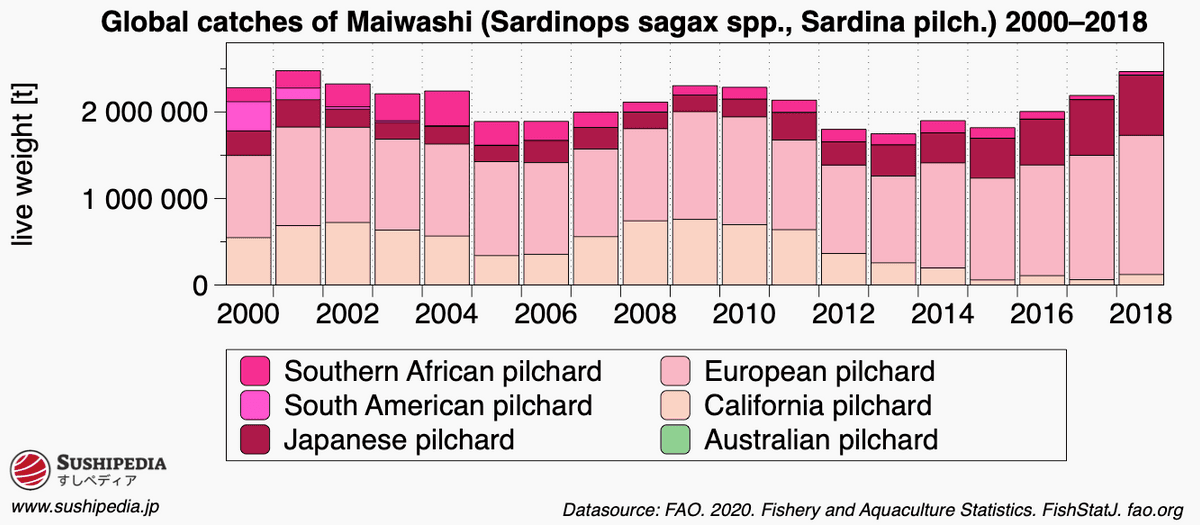
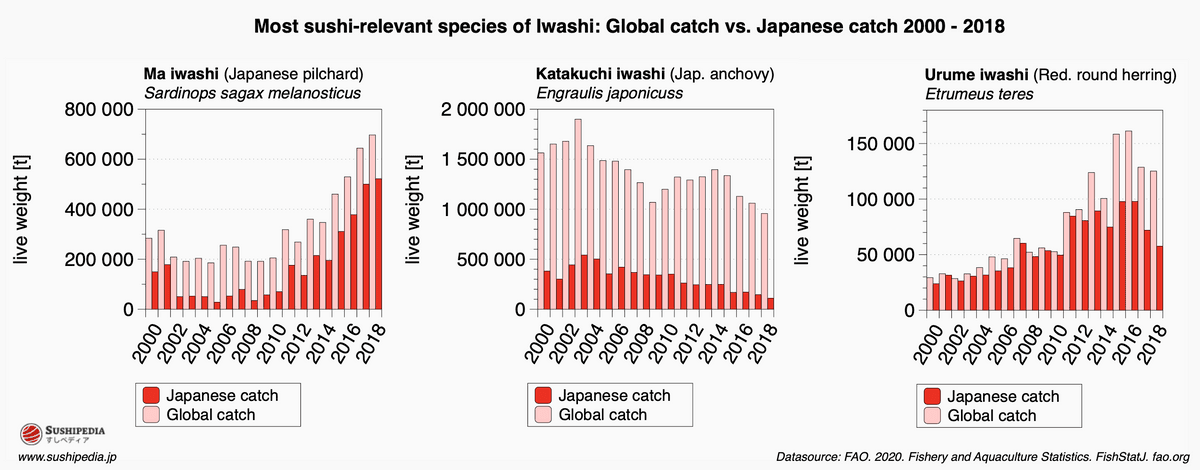
Beast Season for Iwashi
Gallery
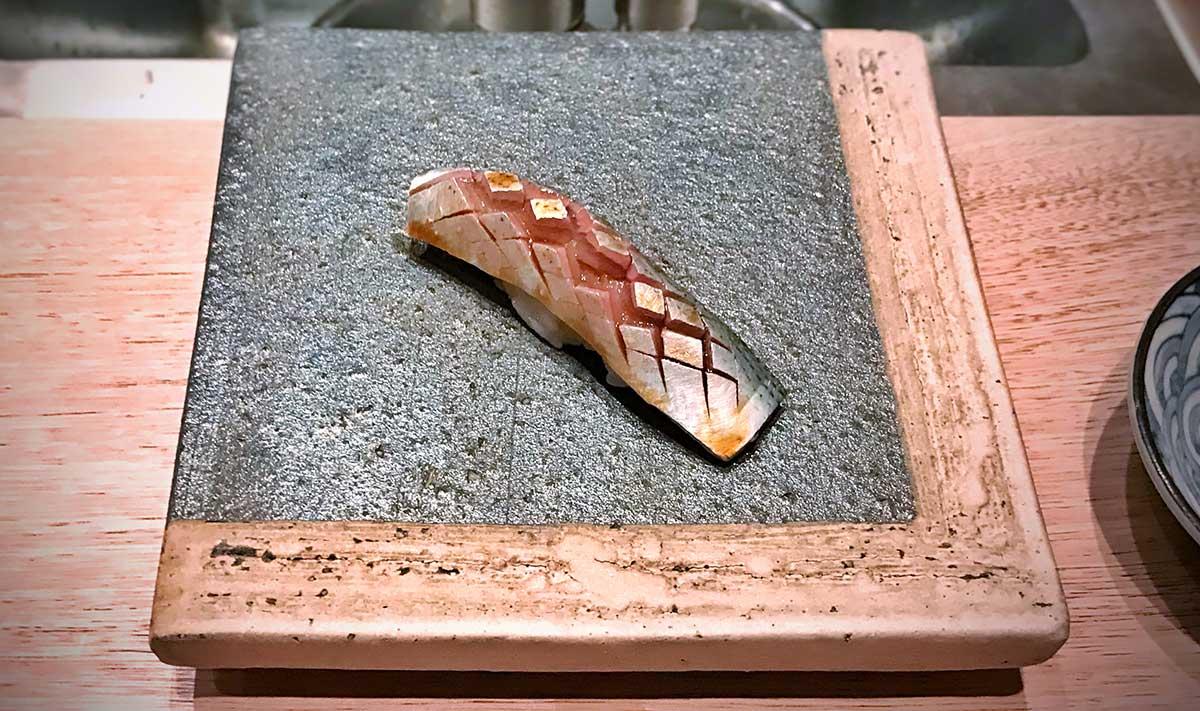
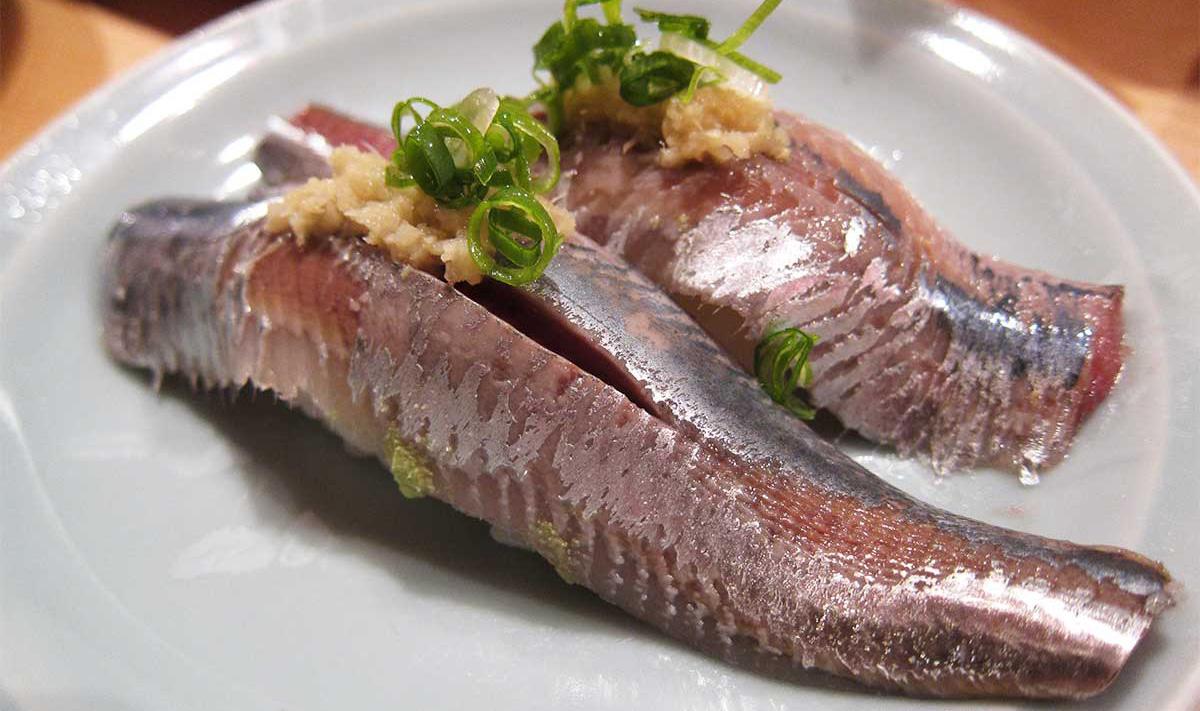
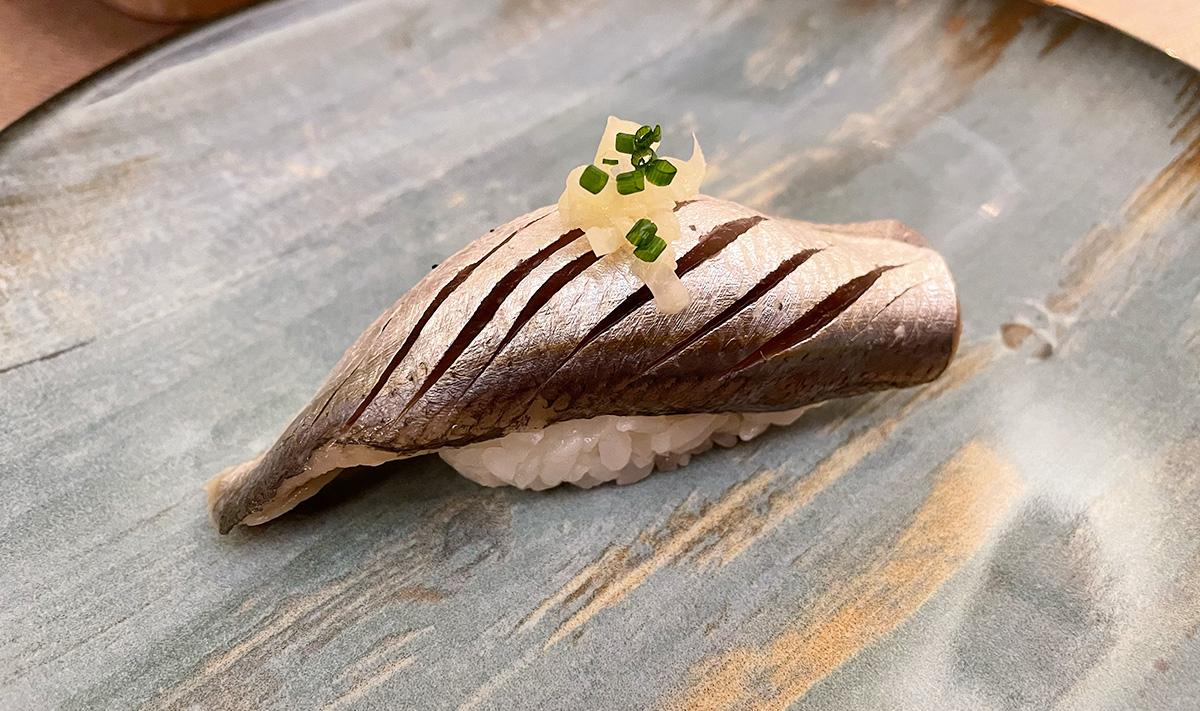
Further information on the author can be found in the section on image credits.
Video about Iwashi
External video embedded from youTube.com: 銀座 鮨あい田 公式チャンネル. 「銀座の親方が実践」イワシの仕込みから握りまで【銀座すしあい田】
Distribution Area of Iwashi
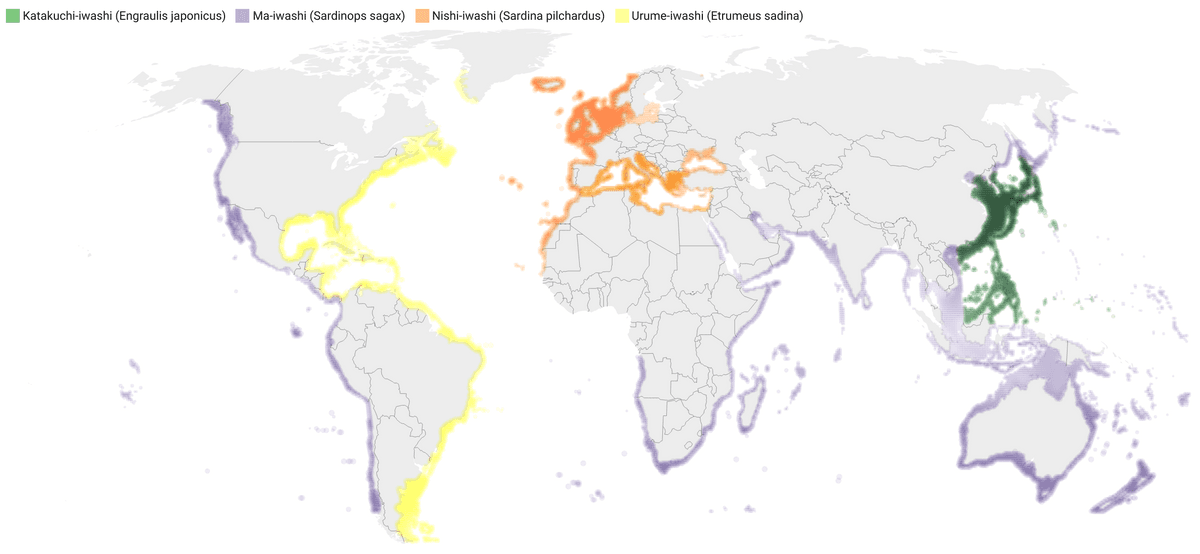
Source: Kaschner, K., Kesner-Reyes, K., Garilao, C., Segschneider, J., Rius-Barile, J. Rees, T., & Froese, R. (2019, October). AquaMaps: Predicted range maps for aquatic species. Retrieved from https://www.aquamaps.org. Scarponi, P., G. Coro, and P. Pagano. A collection of Aquamaps native layers in NetCDF format. Data in brief 17 (2018): 292-296.
Warnings Regarding Iwashi Sushi or Sashimi
- SCOMBROTOXIN: The naturally have high levels of enzymes causes the meat to let it rot quickly. It is therefore essential to maintain an appropriate cold chain until prompt processing. Histamine is not destroyed by normal cooking temperatures, so even properly cooked fish can still result in poisoning. [FDA, 2020]
- PARASITES: The meat, especially that of wild-caught specimens, may be infested with parasites that cause infectious diseases. Infection can be avoided if the raw meat has been adequately frozen. Pickling and soaking in salt or vinegar solution is not sufficient to eliminate the parasites. If the product has been farmed, only raw unprocessed seafood from production facilities whose products are approved for raw consumption should be consumed. [Audicana et al., 2002]
Species of Iwashi
The following species are regarded as authentic. Either historically, according to the area of distribution or according to the common practice in today's gastronomy:
Japanese Name | Common Names, Scientific Name |
|---|---|
katakuchi-iwashi カタクチイワシ | Japanese anchovy, Southern Africa anchovy, cape anchovy Engraulis japonicus family: Engraulidae |
maiwashi マイワシ 真鰯、真鰮 | Japanese pilchard Sardinops sagax melanostictus family: Clupeidae |
urume-iwashi ウルメイワシ 潤目鰯 | Pacific red eye round-herring Etrumeus micropus family: Dussumieriidae |
urume-iwashi ウルメイワシ 潤目鰯 | Red-eye round herring Etrumeus teres family: Dussumieriidae |
The following species can be considered subsitutes. Either on the basis of genetic relationship or because they are similar in taste or appearance:
Japanese Name | Common Names, Scientific Name |
|---|---|
Atlantic red-eye round herring, atlantic round herring, california round herring Etrumeus sadina family: Dussumieriidae | |
chiri-maiwashi チリマイワシ | Chilean sardine, South American pilchard Sardinops sagax sagax family: Clupeidae |
kariforunia-maiwashi カリフォルニアマイワシ | Californian pilchard Sardinops sagax caeruleus family: Clupeidae |
kataboshi-iwashi カタボシイワシ | bali sardinella, fremantle pilchard, indian oil sardine Sardinella lemuru family: Clupeidae |
minamiafurika-maiwashi ミナミアフリカマイワシ | Southern Africa pilchard Sardinops sagax ocellatus family: Clupeidae |
osutoraria-maiwashi オストラリアマイワシ | Australian pilchard Sardinops sagax neopilchardus family: Clupeidae |
yoroppa-maiwashi, nishi-iwashi ヨロッパマイワシ、ニシイワシ | European pilchard, European sardine, true sardine Sardina pilchardus family: Clupeidae |
References & Further Reading
- [Audicana et al., 2002]: Marı́a Teresa Audicana, Ignacio J. Ansotegui, Luis Fernández de Corres, Malcolm W. Kennedy. Anisakis simplex: dangerous — dead and alive?. Trends in Parasitology. Source.Volume 18 (1). Cell Press, Cambridge. 2002. doi:10.1016/S1471-4922(01)02152-3.
- [FDA, 2020]: Fish and Fishery Products Hazards and Controls Guidance. U.S. Department of Health and Human Services Food and Drug Administration Center for Food Safety and Applied Nutrition. 2020.
- [Kase, 2009]: 加瀬 清志. すぐに役立つ366日記念日事典、第3版 (engl. Immediately Useful 366-Day Anniversary Dictionary, 3. Edition). Japan Anniversary Association, Saku (日本記念日協会 編、佐久市), Sougensha, Osaka (創元社、大阪市). 2009.
- [Kurashi, 2020]: ウルメイワシとは?気になる味や食べ方を解説!簡単人気レシピはコレ! (engl. What is Urume Sardine? What is it and how to eat it! Here's an easy and popular recipe!). kurashi-no.jp, Periplus Co. Ltd, Tokyo (ペリプラス株式会社、東京都). 2020. https://kurashi-no.jp/I0020013. Retrieved online on December 24, 2020.
- [Lowry, 2005]: Dave Lowry. Connoisseur's Guide to Sushi: Everything You Need to Know About Sushi Varieties And Accompaniments, Etiquette And Dining Tips And More. The Harvard Common Press, Boston. 2005.
- [Masuo, 1987]: Yoshino Masuo. Sushi. Gakken Co. Ltd., Tokyo. 1987.
- [Satomi, 2016]: Shinzo Satomi. Sukiyabashi Jiro. Vertical Inc., New York. 2016.
- [Sushi Academy, 2017]: 動画でマスター!イワシの仕込みと握り (engl. Master with video! Preparation and nigiri of sardines). sushiacademy.co.jp, Sushi Academy Co., Ltd. (すしアカデミー株式会社), Tokyo (東京). 2017. https://www.sushiacademy.co.jp/archives/25799. Retrieved online on December 24, 2020.
- [Trenor, 2009]: Casson Trenor. Sustainable Sushi: A Guide to Saving the Oceans One Bite at a Time. North Atlantic Books, Berkeley. 2009.
- [Yamamoto, 1990]: Katsuji Yamamoto. Sushi: How to Prepare and Present Over 70 Beautiful Dishes. Smithmark Publishers, New York. 1990.
Image Credits
T.Tseng. Iwashi, Kyo Sushi, Juárez, CDMX Mexico. flickr.com. License: Attribution 2.0 Generic (CC BY 2.0). Changes made: image quality, brightness, contrast, colour matching, sharpening, cropping.
takaokun. IMG_0729, Iwashi Nigiri. flickr.com. License: Attribution 2.0 Generic (CC BY 2.0). Changes made: image quality, brightness, contrast, colour matching, sharpening, cropping.
D. Schilder. Nishi Iwashi Sushi. License: copyrighted ©.